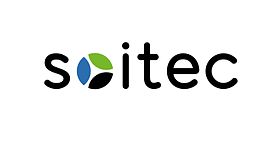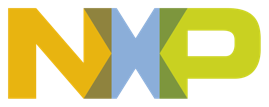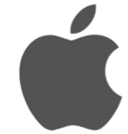Synthèse
The global semiconductor market, following fluctuations due to COVID-19 and geopolitical tensions, such as the US-China trade war, continued to grow. Despite challenges, the market witnessed a significant increase of 26.2% between 2020 and 2021, with a sector revenue of $580 billion in 2022. This growth was driven by digitization trends, the transition to 5G, and the electrification of vehicles.
In France, the semiconductor sector rebounded in Q4 2020 but remained below pre-pandemic levels. Notably, the demand from the automotive industry saw a rapid increase, with electric car sales in France growing and Strategy Analytics predicting the automotive chip market to soar to $105 billion by 2028. The market's competitive landscape is evidenced by extensive R&D, amounting to $71.4 billion in 2021, and innovations from French startups like Menta and DiamFab, pushing the industry forward.
Regulation plays a crucial role, with the EU implementing checks to safeguard against dual-use exports that can be used for military purposes, and launching the European Chips Act to bolster production and ensure technological sovereignty with a significant €43 billion investment plan.
Trends in Semiconductor Demand in the Spotlight
The semiconductor market in the region being analyzed is integral to several sectors, with demand primarily driven by innovations within the electronics industry. Fluctuations in the market mirror the broader global economic environment, underscoring the cyclical nature of the semiconductor industry. The automotive and industrial sectors represent a significant proportion of the area's semiconductor sales, with a substantial 69% of sales in these segments indicating a dependence on cyclicality.
Despite this, the market is on a growth trajectory, propelled by factors such as the digitization of industries, the widespread adoption of 5G technology, and the progressive shift toward vehicle electrification. For instance, the value of semiconductor shipments worldwide in the first quarter of 2021 reached approximately $123.1 billion, marking a 3.6% increase from the previous year and recording the highest first-quarter growth since 2010. In the French market, while there was a recovery towards the end of 2020, the market has yet to return to its pre-pandemic levels. This region experienced a 7% increase in its semiconductor market value in the third quarter of 2020, rising to a 13% increase in the fourth quarter, signaling a contraction of around 8% compared to the same period in the previous year. This mirrors the global trend of shortages in the semiconductor industry compounded by the pandemic.
Demand for semiconductors spans various sectors, with the mobile telephony segment commanding a significant market value, estimated to be between $40 and $50 billion. Expected to grow by approximately 7-8% through 2026, this market segment is stimulated by technological advancements and the rollout of 5G networking. Likewise, the automotive industry, with its pivot towards electrification and digitalization, further amplifies the demand for semiconductors. In France alone, the share of electric car sales has surged to about 17%, underlining the push for more semiconductor integration in vehicles.
Notably, the semiconductor industry is affected by the geopolitical landscape, particularly with the constraints imposed on companies like Huawei, which has been banned from accessing US equipment for semiconductor manufacturing. This exemplifies how regulatory actions can have far-reaching implications on the semiconductor supply chain and market dynamics.
The Titans of the Semiconductor Landscape: Navigating the Currents of Innovation and Competition
The semiconductor market, a bedrock of modern technology, is home to a pantheon of global behemoths and rising stars, each playing a pivotal role in shaping the industry's future. This dynamic arena is not just about the raw power to fabricate cutting-edge chips, but about the innovation, strategic positioning, and adaptability that define the market leaders. Let's explore some of these towering figures in the semiconductor domain.
- Intel stands as a long-revered titan within the industry. Based in the United States, this powerhouse has been synonymous with microprocessors that have powered generations of personal computers. Despite facing competition from other players and dealing with market shifts, Intel's legacy and ongoing research and development efforts keep it at the forefront of semiconductor innovation.
- Samsung Electronics and SK Hynix, hailing from tech-savvy South Korea, demonstrate that Asian players are not just contenders but leaders in the semiconductor space. Samsung's multidimensional role as a behemoth in memory chips, microprocessors, and a consumer electronics giant gives it a unique position within the market, whereas SK Hynix's specialism in memory semiconductors marks it as a crucial entity in the global supply chain.
- TSMC from Taiwan represents the might of foundries—the specialized plants that fabricate chips for other companies. As a foundry leader, it epitomizes the strategic shift in the semiconductor market where manufacturing prowess can be decoupled from chip design, allowing a more modular and flexible approach to semiconductor production.
- American companies Qualcomm, Broadcom, and Nvidia, each have carved their niches with precision. Qualcomm is a titan in wireless technology, propelling the telecommunications industry forward. Broadcom's diverse range of semiconductor products keep it at the nexus of the communication sector. Meanwhile, Nvidia has emerged as a leader in graphics processors, revolutionizing not just gaming but also accelerating the field of artificial intelligence.
- French-Italian stalwart STMicroelectronics is a testament to European expertise in specialized integrated circuits and microcontrollers, while NXP from the Netherlands focuses on automotive electronics, microcontrollers, and logic circuits, reflecting the critical role semiconductors play in modernizing and digitizing the automotive sector.
- Japanese giant Murata specializes in passive electronic components, quietly underscoring the ubiquity and necessity of such components in nearly every electronic device.
à la compréhension de ce marché
Détail du contenu
 Informations
Informations
- Nombre de pages : 30 pages
- Format : Version digitale et PDF
- Dernière mise à jour : 21/12/2022
 Sommaire et extraits
Sommaire et extraits
1 Market overview
1.1 Presentation
A semiconductor is a material with the electrical characteristics of an insulator, but for which an electron can contribute to an electric current. It therefore has an electrical conductivity intermediate between that of metals and that of insulators. The semiconductor market is the market for products made from this type of material. Semiconductors are partly used in electronics to manufacture components such as diodes, transistors, integrated circuits which are then used in telephones, cars, computers...
The players in the semiconductor market are mainly international players and the three largest semiconductor vendors are Intel (US), Samsung (South Korea) and SK Hynix (South Korea) with respective revenue of $19.7 billion, $16.8 billion and $7.5 billion in Q1 2021. However, market players such as Intel saw a revenue decline of 4% from the last quarter of 2020. In its report, Intel explains this decline as a result of limited semiconductor supply in the market. This can also be explained by the current geopolitical context and the U.S. "war" against Huawei, which is destabilizing the semiconductor market, including the fact that the U.S. has banned Huawei from using U.S. machines to manufacture its semiconductors.
However, despite the backdrop, the global semiconductor market remains attractive as global shipments in the first quarter of 2021 were $123.1 billion, up 3.6% from the first quarter of 2020, making it the highest increase for a first quarter since 2010. The growth of the semiconductor market is expected to continue in the coming years, as due to the global pandemic, industries are experiencing a shortage of semiconductors.
While the French semiconductor market saw some semblance of recovery in Q4 2020, we are still far from its pre-pandemic highs. Indeed, in Q2 2020, the market fell and then recovered by 7% in value in Q3 2020, reaching in Q4 a 13% growth in value, which however remains a contraction of 8% compared to Q4 2019. In fine, the semiconductor market in France seems to follow the course of the global market.
1.2 Global market
The semiconductor market has seen ups and downs in recent years, including the Covid-** crisis and the trade war between China and the United States. However, the market growth is a strong trend, which is expected to be accelerated by the digitization of companies, the transition to *G or even the ...
1.3 Size of the French semiconductor market
Although the majority of current production capacity is located in the Asia-Pacific region, notably in China and South Korea, France remains a major player in the semiconductor market.
Data on revenues generated by the French semiconductor sector are collected by INSEE under NAF code **.**: "Manufacture of electronic components", which includes the ...
1.4 Trends and cyclicity
The semiconductor industry is a cyclical industry that follows the course of the global economy. Indeed, this industry is strongly influenced by the demand for personal computers smartphones and more generally, by the electronics industry.
France is an exception in that **% of its sales are in the industrial and automotive sectors, ...
1.5 International trade
To quantify global semiconductor trade, the Semiconductors Industry Association(***) relies on UN Comtrade data collected under HS codes:
****: Diodes, transistors and semiconductor-like devices; ****: Electronic integrated circuits.
This allows us to establish France's trade balance, as well as its main suppliers and buyers for this product.
Trade balance
Aggregating the data ...
2 Analysis of the demand
2.1 Final destination of semiconductors
Semiconductors are intermediate manufactured products, which are needed in the realization of a wide variety of finished products. The SIA's annual report gives an idea of the markets and their proportions. The demand from car manufacturers has grown by **.*% per year, overtaking consumer products and other industrial sectors. Governments are using ...
2.2 Demand driven mainly by cell phones
Mobile telephony is a major market for the semiconductor industry. Estimated to be worth nearly $** billion in ****, this segment could grow by *.**% through ****. Asia-Pacific is the driving region in this segment.
This growth is fueled by the introduction of *G, but also by the development of technologies such as cloud computing ...
2.3 Demand driven by the automotive industry
Vehicle electrification is a growth driver for the semiconductor industry. globally, China has the largest electrified fleet in the world, accounting for **% of the global fleet. In Europe, **% of the fleet is electric.
evolution of the share of electric car sales in the automotive market France, ****-****, % Source: ****
Strategy Analytics predicts ...
3 Market structure
3.1 Industry characteristics
The main differentiating factor in the semiconductor industry is the quantity of transistors that can be placed on a chip. The market is characterized by tough competition, which pushes manufacturers to constantly improve the quality of their products. Thus, the industry has generated the theorization of " Moore's Law ", which states that ...
3.2 Production
The production of electronic components is particularly meticulous. Indeed, because of their size and functions, no error is allowed
Producing electronic components therefore requires a significant basic investment in order to benefit from the best infrastructure. The quality of an electronic component will determine the success of its manufacturers.
The complexity ...
3.3 Distribution
Because semiconductors are so fragile, good distribution is crucial, and manufacturers have a choice between going through distributors or selling directly.
According to Acsiel, sales through distributors will be more popular in ****, while the market is still suffering from shortages. This choice of the distribution answers the will of diversification of ...
4 Analysis of the offer
4.1 Products
Semiconductors are mainly divided into two main product categories: discrete semiconductors and integrated circuits. Sensors and optoelectronic devices can also be distinguished.
Breakdown of global sales by product type World, ****, % Source: ****
The role of discrete semiconductors is to perform a single function. They differ from integrated circuits, which integrate several functions, ...
4.2 Prices
The prices shown in Table * are price ranges for the four main semiconductor categories: Discrete, Analog ICs, Logic ICs and Memory ICs. These prices are obtained through Mouser Electronics, a U.S. online distributor of electronic components.
The table compares the semiconductor prices of the two European market leaders: the French ...
4.3 A highly competitive market in perpetual change: examples of two French start-ups
The shortage of semiconductors caused by the Covid-** pandemic has accelerated the upheaval in the industry. One of the major current innovations is that of reprogrammable semiconductors, which make it possible to assemble all the components of the finished product on a single chip. Another research avenue is the exploitation of ...
5 Regulation
5.1 A regulatory framework implemented by the EU
In the context of the trade war between China and the United States, products manufactured in the EU are receiving increased attention from Chinese actors. [***] However, the sale of chips and semiconductors, as dual-use exports that can be applied for military purposes, is protected. The sale therefore requires authorization and is ...
 Liste des graphiques
Liste des graphiques
- Marché mondial des semi-conducteurs
- Évolution du chiffre d'affaires HT de la fabrication de composantes électroniques
- Évolution de la part dans la production des semi-conducteurs par région
- Évolution des dépenses R&D des constructeurs de semi-conducteurs
- Répartition des ventes mondiales par type de produits
Toutes nos études sont disponible en ligne et en PDF
Nous vous proposons de consulter un exemple de notre travail d'étude sur un autre marché !
Dernières actualités
Entreprises citées dans cette étude
Cette étude contient un panorama complet des entreprises du marché avec les derniers chiffres et actualités de chaque entreprise :
 Choisir cette étude c'est :
Choisir cette étude c'est :
Accéder à plus de 35 heures de travail
Nos études sont le résultat de plus de 35 heures de recherches et d'analyses. Utiliser nos études vous permet de consacrer plus de temps et de valeur ajoutée à vos projets.
Profiter de 6 années d'expérience et de plus de 1500 études sectorielles déjà produites
Notre expertise nous permet de produire des études complètes dans tous les secteurs, y compris des marchés de niche ou naissants.
Notre savoir-faire et notre méthodologie nous permet de produire des études avec un rapport qualité-prix unique
Accéder à plusieurs milliers d'articles et données payantes
Businesscoot a accès à l'ensemble de la presse économique payante ainsi qu'à des bases de données exclusives pour réaliser ses études de marché (+ 30 000 articles et sources privées).
Afin d'enrichir nos études, nos analystes utilisent également des indicateurs web (semrush, trends…) pour identifier les tendances sur un marché et les stratégies des entreprises. (Consulter nos sources payantes)
Un accompagnement garanti après votre achat
Une équipe dédiée au service après-vente, pour vous garantir un niveau de satisfaction élevé. (+33) 9 70 46 55 00
Un format digital pensé pour nos utilisateurs
Vous accédez à un PDF mais aussi à une version digitale pensée pour nos clients. Cette version vous permet d’accéder aux sources, aux données au format Excel et aux graphiques. Le contenu de l'étude peut ainsi être facilement récupéré et adapté pour vos supports.
 Nos offres :
Nos offres :
the semiconductor market | France
- Quels sont les chiffres sur la taille et la croissance du marché ?
- Quels leviers tirent la croissance du marché et leur évolution ?
- Quel est le positionnement des entreprises sur la chaine de valeur ?
- Comment se différencient les entreprises du marché ?
- Données issues de plusieurs dizaines de bases de données
Pack 5 études (-15%) France
- 5 études au prix de 75,6€HT par étude à choisir parmi nos 800 titres sur le catalogue France pendant 12 mois
- Conservez -15% sur les études supplémentaires achetées
- Choisissez le remboursement des crédits non consommés au terme des 12 mois (durée du pack)
Consultez les conditions du pack et de remboursement des crédits non consommés.
- 29/02/2024 - Ajout des informations de l'entreprise Wise Integration
- 11/02/2024 - Ajout des informations de l'entreprise XFAB
- 30/11/2023 - Ajout des informations de l'entreprise Linxens
- 13/10/2023 - Ajout des informations de l'entreprise UpMem
- 08/08/2023 - Ajout des informations de l'entreprise Hua Hong Semiconductor
- 27/06/2023 - Ajout des informations de l'entreprise JSR
- 11/06/2023 - Ajout des informations de l'entreprise Icape
- 27/02/2023 - Ajout des informations de l'entreprise Apple 3
- 21/02/2023 - Mise à jour des données financières de l'entreprise Samsung Electronics
- 21/02/2023 - Mise à jour des données financières de l'entreprise STMicroelectronics
- 17/02/2023 - Ajout des informations de l'entreprise Infiniteon
- 16/02/2023 - Ajout des informations de l'entreprise ASML
- 17/01/2023 - Ajout des informations de l'entreprise Samsung Electronics 1
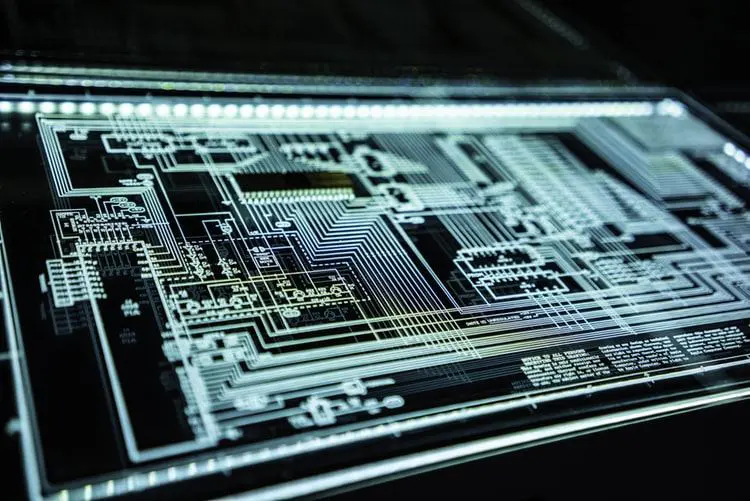




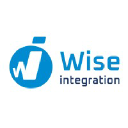 Wise-Integration veut conquérir le marché des chargeurs électriques - 05/03/2024
Wise-Integration veut conquérir le marché des chargeurs électriques - 05/03/2024
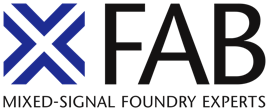 Le fondeur de puces européen X-Fab continue à investir dans l’extension de son usine en France - 11/02/2024
Le fondeur de puces européen X-Fab continue à investir dans l’extension de son usine en France - 11/02/2024
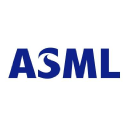 ASML voit ses commandes tripler, signe de reprise sur le marché des puces - 24/01/2024
ASML voit ses commandes tripler, signe de reprise sur le marché des puces - 24/01/2024
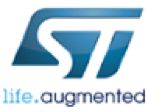 STMicroelectronics conserverait son titre de champion européen des puces - 20/01/2024
STMicroelectronics conserverait son titre de champion européen des puces - 20/01/2024
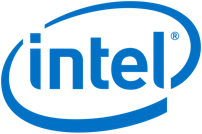 Intel rachète Silicon Mobility pour accélérer dans l'automobile - 15/01/2024
Intel rachète Silicon Mobility pour accélérer dans l'automobile - 15/01/2024

